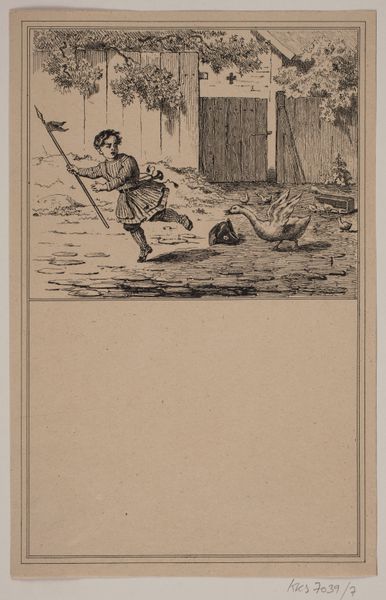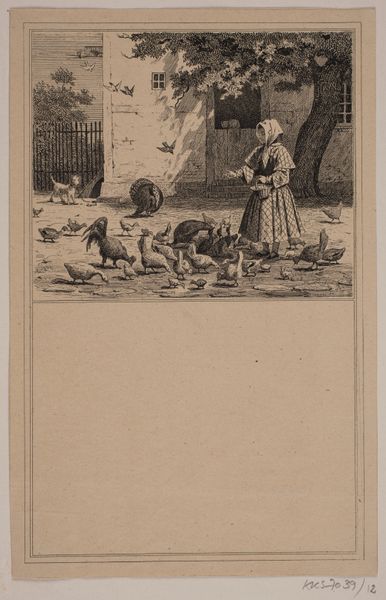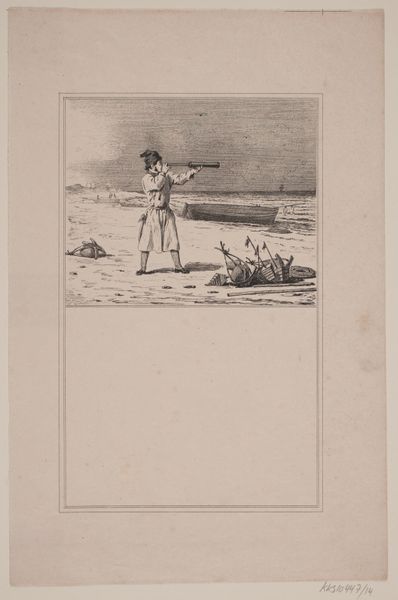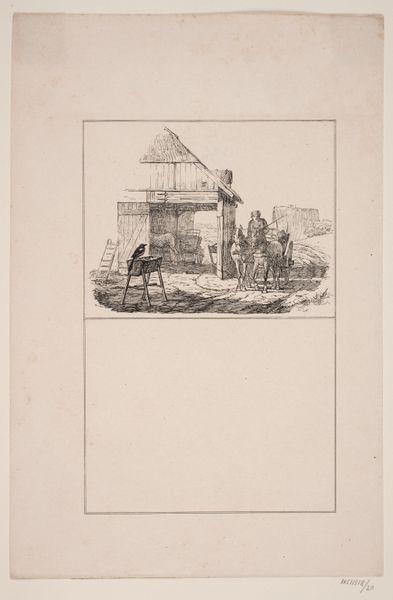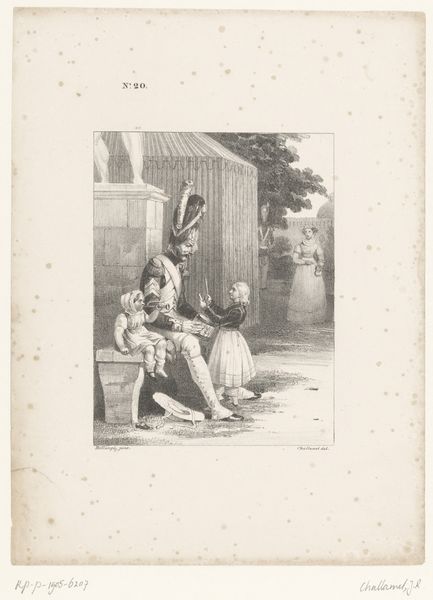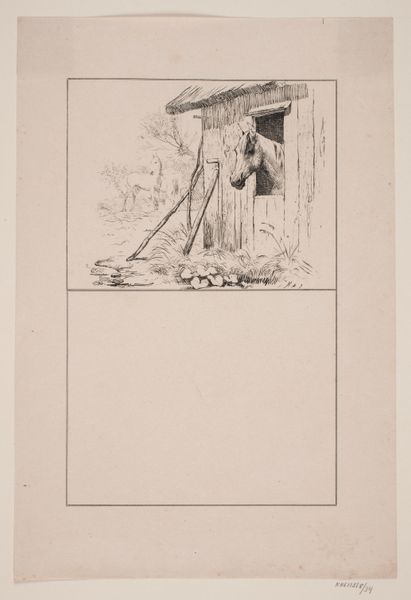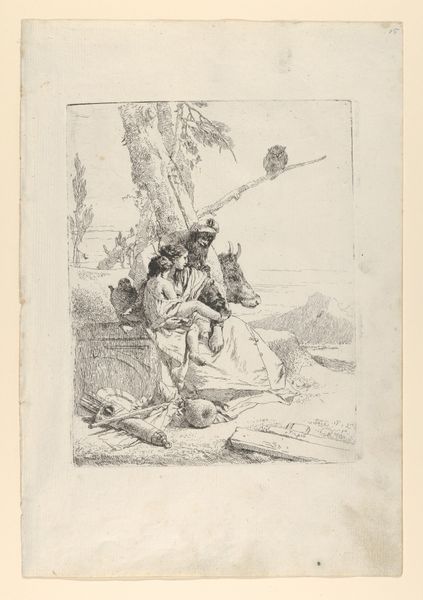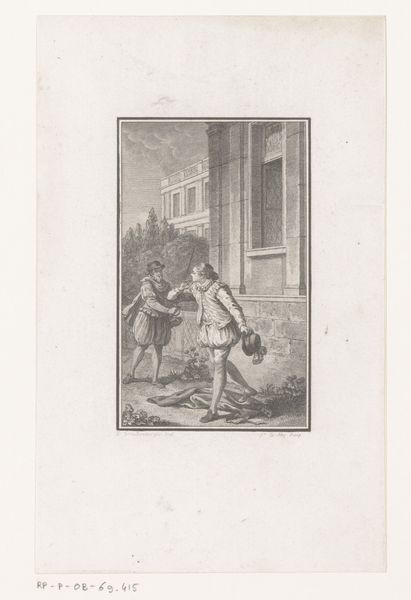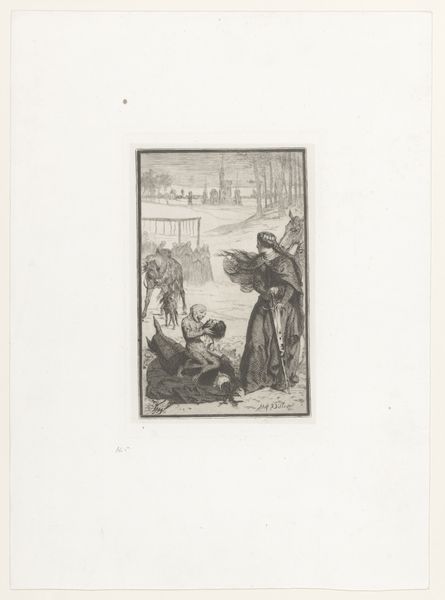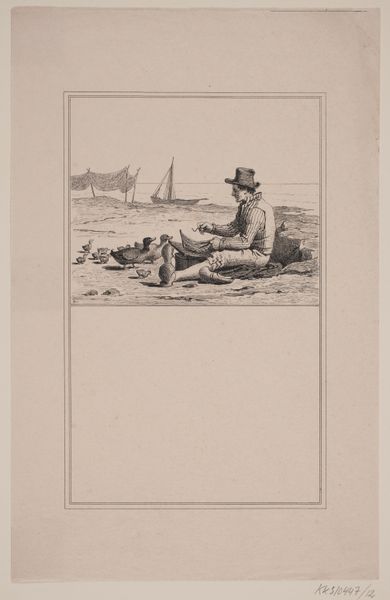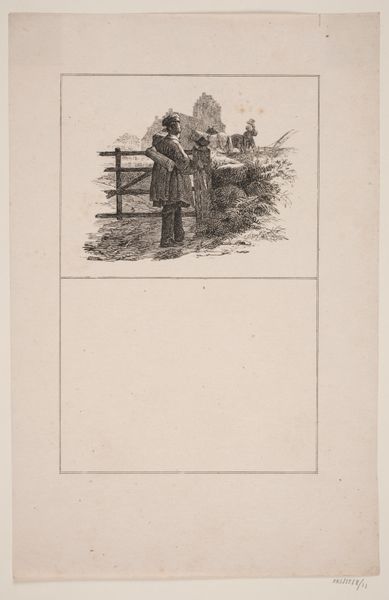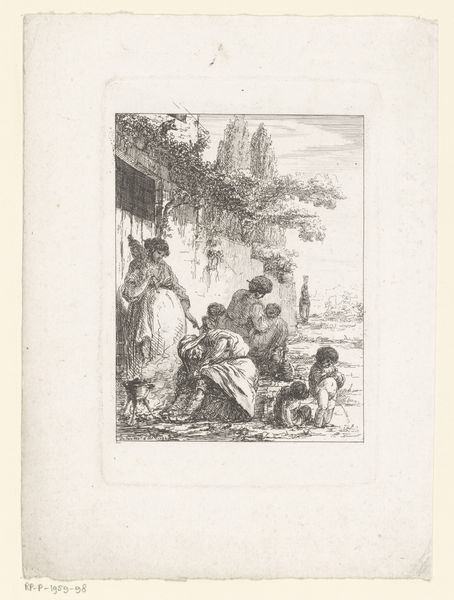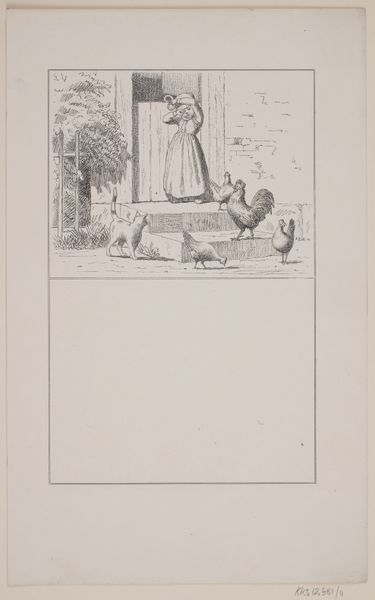
Den tapre helt. Prøvetryk til Chr. Winther og M. Rørbye, "25 Billeder for små børn" 1846
0:00
0:00
drawing, lithograph, print, paper, ink
#
drawing
#
narrative-art
#
lithograph
# print
#
paper
#
ink
#
romanticism
#
genre-painting
Dimensions: 270 mm (height) x 175 mm (width) (brutto)
Curator: Here we have "Den tapre helt. Prøvetryk til Chr. Winther og M. Rørbye, "25 Billeder for små børn"," a print created in 1846 by Adolph Kittendorff. It’s rendered in ink as a lithograph on paper. Editor: The first thing that strikes me is the frantic energy; that central figure practically leaps off the page, propelled by some unseen force! Curator: It certainly conveys a dynamic scene. As the title suggests, this work was a preliminary print intended for a children's book collaboration. Its context is interesting. Christian Winther was a poet and Rørbye a painter—Kittendorff served here to combine word and image, creating moral tales for youngsters, reflecting a common 19th-century approach. Editor: I'm drawn to the compositional balance. See how the solid mass of the building in the background contrasts with the dynamism of the foreground? It anchors the image and emphasizes movement. The lines are delicate, creating depth with cross-hatching but clarity as well. Curator: Note, too, how such works were perceived within the wider sphere of Romanticism; the fascination with childhood innocence, education, and instilling societal values. These printed images served to reproduce and promote middle-class ideologies on the rearing of children in the context of emerging nationalism. Editor: What's fascinating is how the image transcends its pedagogical function through a sort of contained chaos. It’s about order and narrative; the figures enact familiar roles we see replicated across centuries, across styles. The boy is confident. The animals display individual reactions. Curator: It's precisely these dynamics that helped to solidify bourgeois understanding of social roles and childhood development at that time. These small prints offered guidance, framing accepted behavior within the home and society at large. Editor: From a purely formal standpoint, notice how the artist expertly uses light and shadow to create texture and highlight the dramatic tension in a simple medium like ink on paper. He is doing some clever work there, playing the emotional tonality with such subtle gradation. Curator: It truly demonstrates how something created for didactic purposes could act as a cultural touchstone—a potent combination! Editor: Absolutely. Examining these formal qualities offers us a clearer understanding of artistic purpose!
Comments
No comments
Be the first to comment and join the conversation on the ultimate creative platform.
